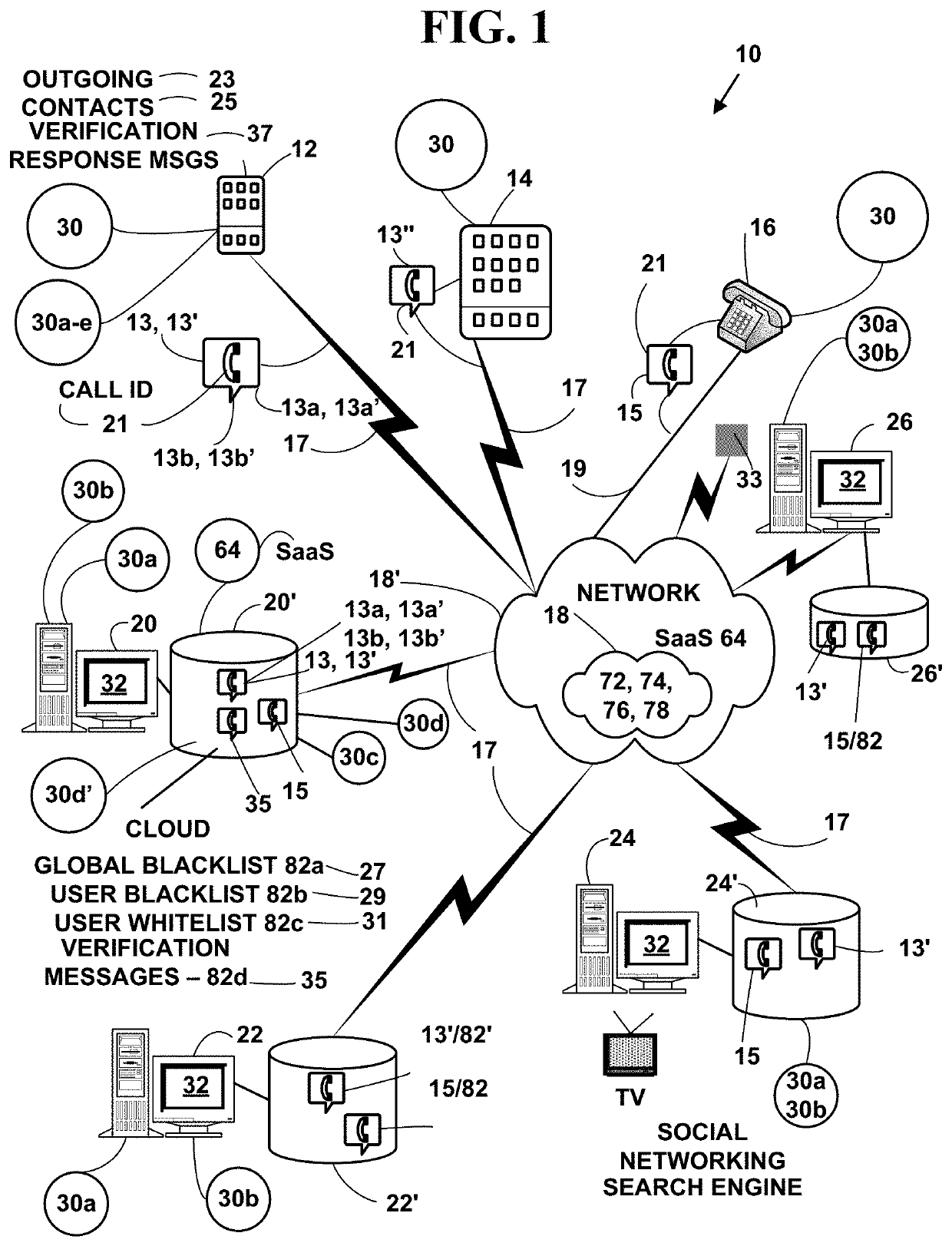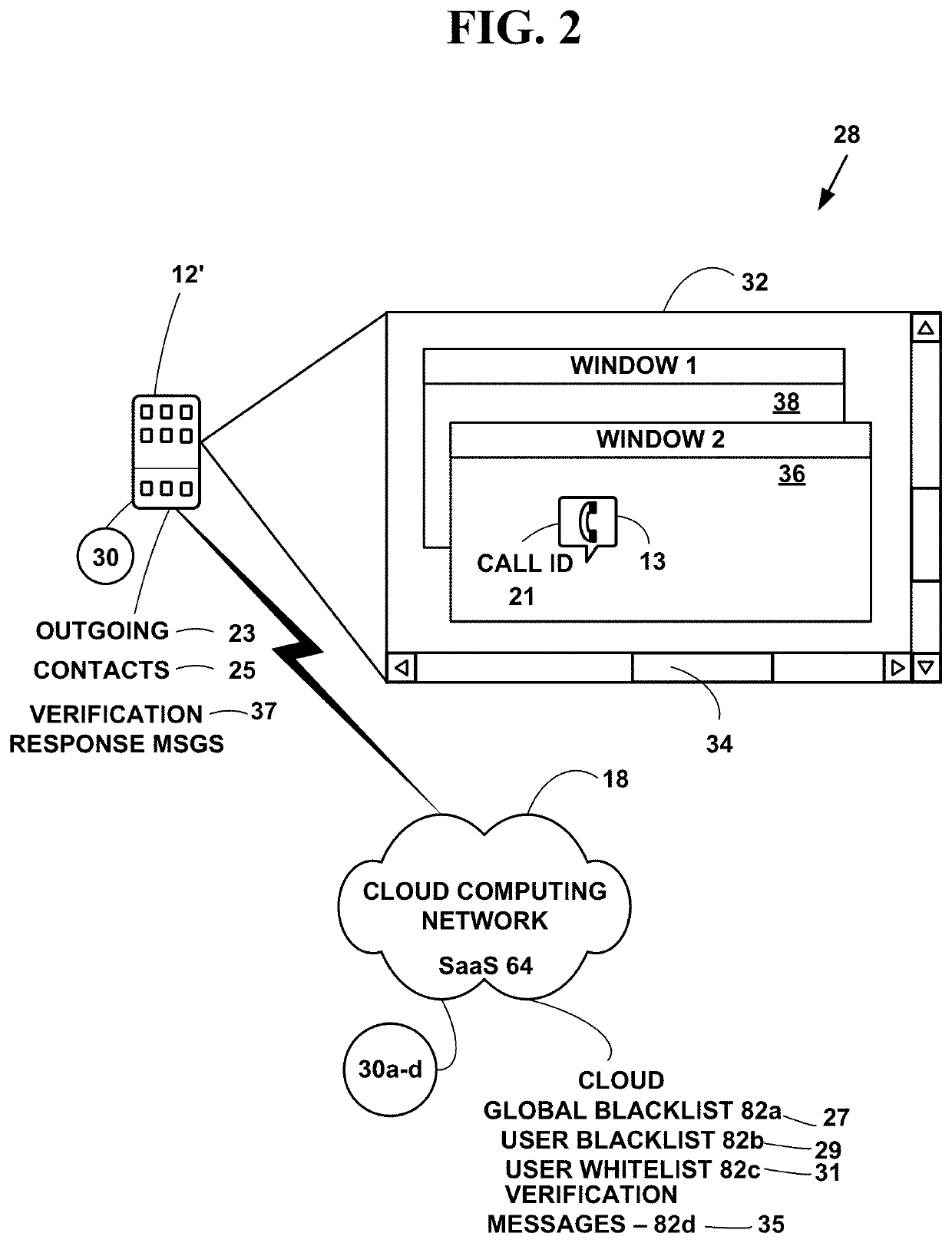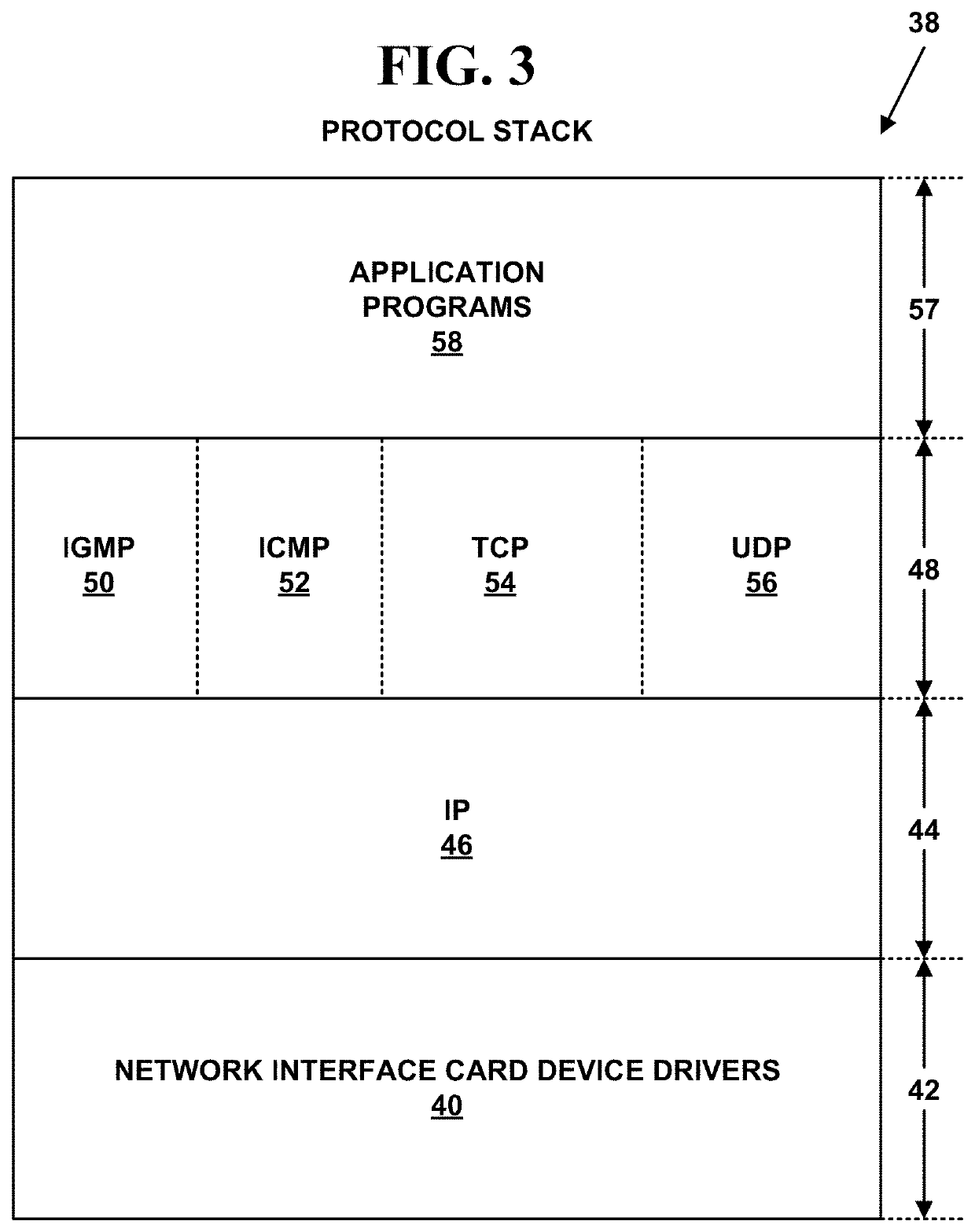Method and system for automatically detecting and blocking robocalls
a technology of automatic detection and blocking robocalls, applied in the field of telecommunications and robocalls, can solve the problems of many call blocking applications, ftc does not and cannot block robocalls, and requires separate applications for wireless mobile phones
- Summary
- Abstract
- Description
- Claims
- Application Information
AI Technical Summary
Benefits of technology
Problems solved by technology
Method used
Image
Examples
Embodiment Construction
Exemplary Electronic Call Processing and Display System
[0045]FIG. 1 is a block diagram illustrating an exemplary electronic call processing system 10 for blocking unwanted. The exemplary electronic system 10 includes, but is not limited to, one or more target network devices 12, 14, 16, etc. each with one or more processors and each with a non-transitory computer readable medium.
[0046]The one or more target network devices 12, 14, 16 (illustrated in FIG. 1 only as a tablet and two smart phones for simplicity) include, but are not limited to, desktop and laptop computers, tablet computers, mobile phones, non-mobile phones with displays, robots, smart phones, Internet phones, Internet appliances, personal digital / data assistants (PDA), portable, handheld and desktop video game devices, Internet of Things (IoT) devices, cable television (CATV), satellite television (SATV) and Internet television set-top boxes, digital televisions including high definition television (HDTV), three-dimen...
PUM
 Login to View More
Login to View More Abstract
Description
Claims
Application Information
 Login to View More
Login to View More - R&D
- Intellectual Property
- Life Sciences
- Materials
- Tech Scout
- Unparalleled Data Quality
- Higher Quality Content
- 60% Fewer Hallucinations
Browse by: Latest US Patents, China's latest patents, Technical Efficacy Thesaurus, Application Domain, Technology Topic, Popular Technical Reports.
© 2025 PatSnap. All rights reserved.Legal|Privacy policy|Modern Slavery Act Transparency Statement|Sitemap|About US| Contact US: help@patsnap.com



